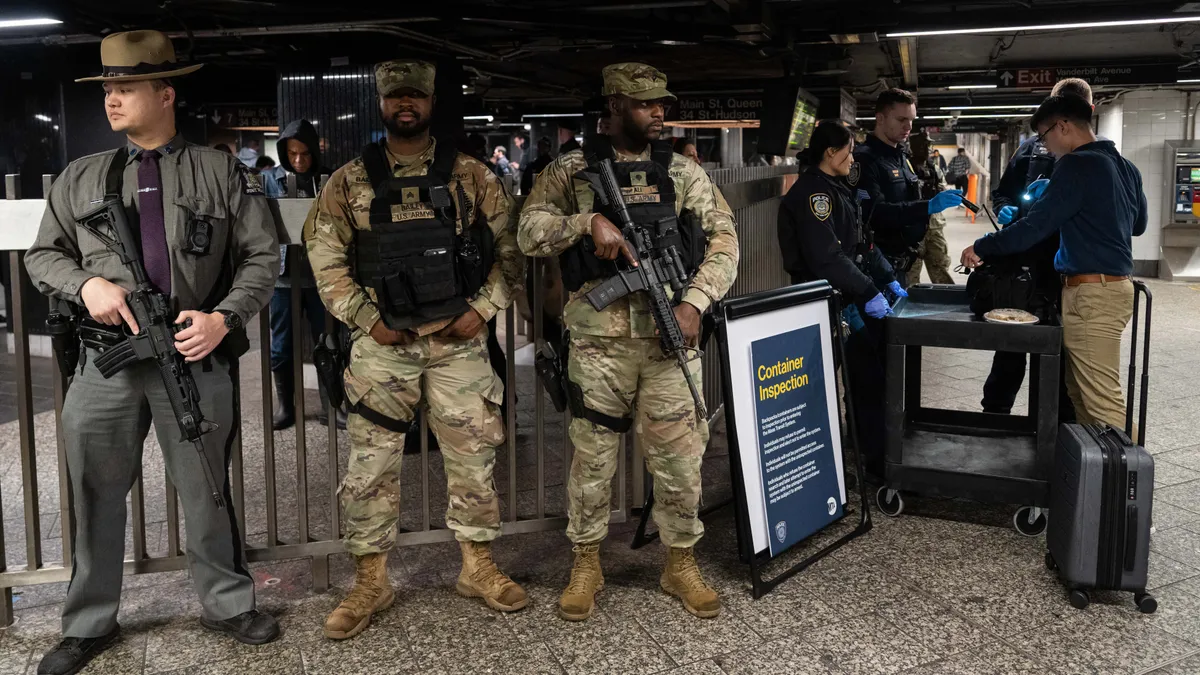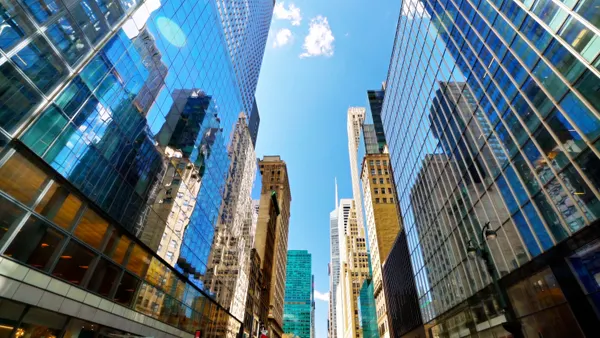Dive Brief:
- New York Gov. Kathy Hochul ordered 750 members of the National Guard and 250 state and transit police to conduct random bag inspections at subway stations in New York City beginning yesterday.
- Felony assaults on the subway system are up 15.5% this year, a figure that includes three homicides.
- Hochul’s action is part of a five-point plan to reduce subway crime by adding cameras to conductors’ cabins, establishing 10 teams of mental health workers, tracking repeat offenders and passing proposed legislation allowing judges to ban those convicted of a violent crime from the subway system.
Dive Insight:
High-profile attacks on riders of the New York City subway system include shootings aboard trains and passengers being pushed onto the tracks in front of oncoming trains. Transit workers are also targets. On Feb. 29, an unknown assailant slashed a subway conductor’s neck, prompting a job action at two stations.
Transport Workers Union Local 100, which represents virtually all subway employees who operate and maintain the trains, endorsed Hochul’s action. “Public safety must be the very first priority in our transit system for both riders and workers,” the union’s president, Richard Davis, said in a statement Wednesday.
Michael Kemper, chief of transit at the New York City Police Department, said in an interview yesterday on CBS News New York’s streaming network, “Just the uniform presence adds so much value. And when people come into a subway system, they want to see the cop. It sets the tone of law and order immediately the minute our riders walk into the subway system.”
But others expressed concerns about possible racial profiling. “This is another unfortunate example of policymaking through overreaction and overreach,” New York Civil Liberties Union Executive Director Donna Lieberman said in a statement. “These heavy-handed approaches will, like stop-and-frisk, be used to accost and profile Black and Brown New Yorkers.”
However, New York City Mayor Eric Adams, speaking on NY1 yesterday, insisted that wouldn’t happen. “We’re not going to go to a system of racial profiling, ethnic profiling. That is not how we police in the city, we’re focused on those who are committing crimes.”
Danny Pearlstein, policy and communications director for the Riders Alliance, a New York transit advocacy organization, expressed other concerns about Hochul’s plan. “While well-intentioned, deploying troops to subway entrances is more likely to increase the perception of crime among people who don’t ride public transit than to protect the millions of riders and workers on platforms and trains each day,” he said in an email statement.
Transit crime is not limited to New York City. According to the Federal Transit Administration, an average of 241 assaults on transit workers occurred each year from 2008 to 2021. The FTA recently partnered with the U.S. Department of Transportation Volpe Center on a research report looking into assaults on public transit systems and published new resources on its website to help transit agencies prevent crime on their systems. The FTA also proposed a general directive on Dec. 20, 2023 for certain transit agencies to conduct safety risk assessments related to assaults on transit workers. The directive would require these agencies to identify strategies to improve worker safety.
“Everyone deserves a safe workplace, including and especially the frontline transit workers who keep our nation moving,” said U.S. Transportation Secretary Pete Buttigieg in a Dec. 20 statement.












